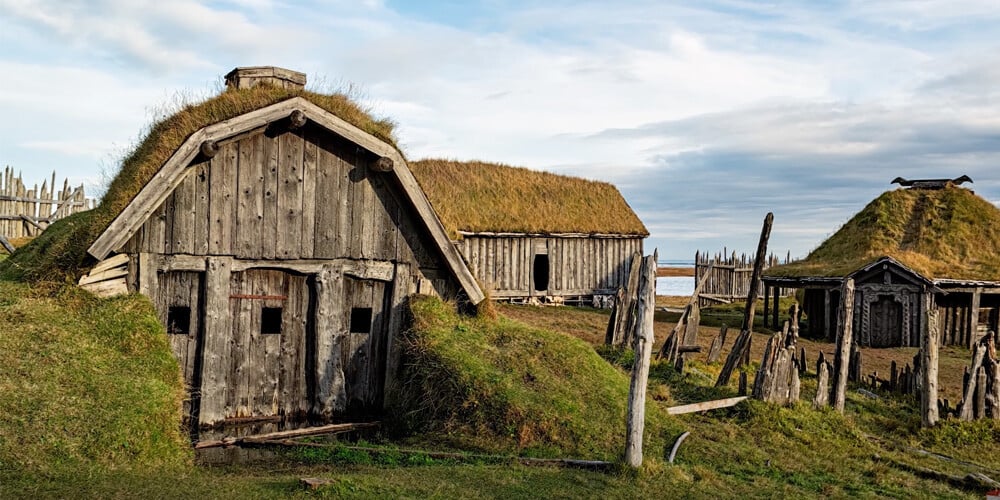A Journey Through Time: The Fascinating History of Home Insulation


When we think of home insulation, our minds may immediately go to the fluffy pink fiberglass or modern spray foam we see today.
But insulation has a surprisingly rich history, stretching all the way back to ancient civilizations, each making unique advancements to protect against the elements.
In this article, we’re traveling through time to explore when insulation was invented, what types of insulation were used in the 1920s, and how this has evolved into today’s top materials.
Let’s hop in our DeLorean and go back in time.
The Early Days of Insulation: Ancient Egypt, Greece, and Rome
Long before fiberglass and foam, ancient civilizations knew a thing or two about staying comfortable in their environments.
The Egyptians, for example, constructed their iconic stone buildings with mud bricks, which helped regulate the intense desert temperatures. These bricks worked like a natural form of insulation, keeping the scorching sun at bay and making interiors more comfortable.
In Ancient Greece, insulation took a different form: asbestos.
While we now know asbestos is dangerous, the Greeks used it because it was an effective insulator. Fast forward to Ancient Rome, and we see the use of cork in aqueducts to help insulate water channels, maintaining temperatures as water traveled across long distances.
The Vikings and Middle Ages: Natural Insulation Materials
As we move further through history, we see other creative insulation approaches.
The Vikings, for instance, used mud to seal the cracks in their structures, helping keep cold air out during frigid Nordic winters.
In the Middle Ages, large tapestries became popular, hung on castle walls to prevent drafts and add a touch of warmth to otherwise chilly stone interiors.
Industrial Revolution and the Rise of Asbestos
The Industrial Revolution brought new materials to the forefront of insulation, particularly asbestos.
With the rise of factories and manufacturing, asbestos became the go-to insulation for pipes and machinery due to its heat resistance. This trend extended into homes and continued well into the 20th century, with asbestos being used widely until health concerns emerged in the 1970s.
The Quirky Insulation of the 1930s and 1940s
In the early 20th century, some unusual materials made their way into home walls.
From horsehair insulation to newspapers, photographs, and even dolls, people used whatever they could to fill wall cavities and prevent drafts. Horsehair insulation is one of the more notable examples, offering some protection from air movement.
But around this time, cellulose was also being developed, a key turning point in insulation history.
The 1950s and 1960s: Fiberglass and Cellulose Take Center Stage
Fiberglass insulation emerged in the mid-20th century, offering a more reliable and affordable option.
Cellulose also gained popularity in the 1950s and 1960s, especially after manufacturers added fire retardants, making it a safer choice for homeowners.
In 1965, new regulations were introduced, stating that all new homes had to have insulation in their walls. This marked a major shift in the industry, as insulation became a standard in home construction, aiming to improve comfort and energy efficiency.
The Birth of Foam Insulation in the 1970s
The 1970s brought yet another innovation to the insulation world: foam insulation.
Although not immediately popular, foam insulation has become a leading choice due to its effectiveness in creating an air-tight seal. Unlike fiberglass and cellulose, foam insulation can fill every nook and cranny, preventing unwanted air movement and helping homeowners save on energy bills.
Today's Insulation Options and Why Foam is a Top Choice
In today’s homes, we primarily see three types of insulation: fiberglass, cellulose, and foam.
With growing awareness of energy efficiency and carbon footprints, many homeowners choose foam insulation for its ability to seal the entire building envelope. This air-sealing property means the air you pay to heat or cool stays inside, reducing your energy bills and making your home more comfortable.
Why Understanding the History of Insulation Matters
Insulation has come a long way, from mud bricks in ancient Egypt to the cutting-edge foam insulation we know today.
Each period of history has contributed something unique to the development of modern insulation, allowing us to choose materials that fit our needs and environmental priorities.
If you’re interested in learning more about the types of insulation available or want to make your home more energy-efficient, check out our Learning Center for more tips and insights.
Related Articles
Everything You Need to Know About Insulating a Balloon Frame House with RetroFoam
Knob and Tube Wiring and RetroFoam: Can You Add Insulation to an Older Home?
About Amanda Emery
Amanda previously has worked as a breaking news and crime reporter, TV news producer, and editor. As a journalist, she has won several awards from The Society of Professional Journalists - Detroit Chapter and the Michigan Press Association. Amanda uses her experience as a journalist to write content that will help educate homeowners on foam insulation benefits. When Amanda isn’t writing, she’s spending time with her husband Chris, daughter Lilith-Maeve, and rescued huskies Danger and Wendigo. She also loves knitting, making art, and cooking.


